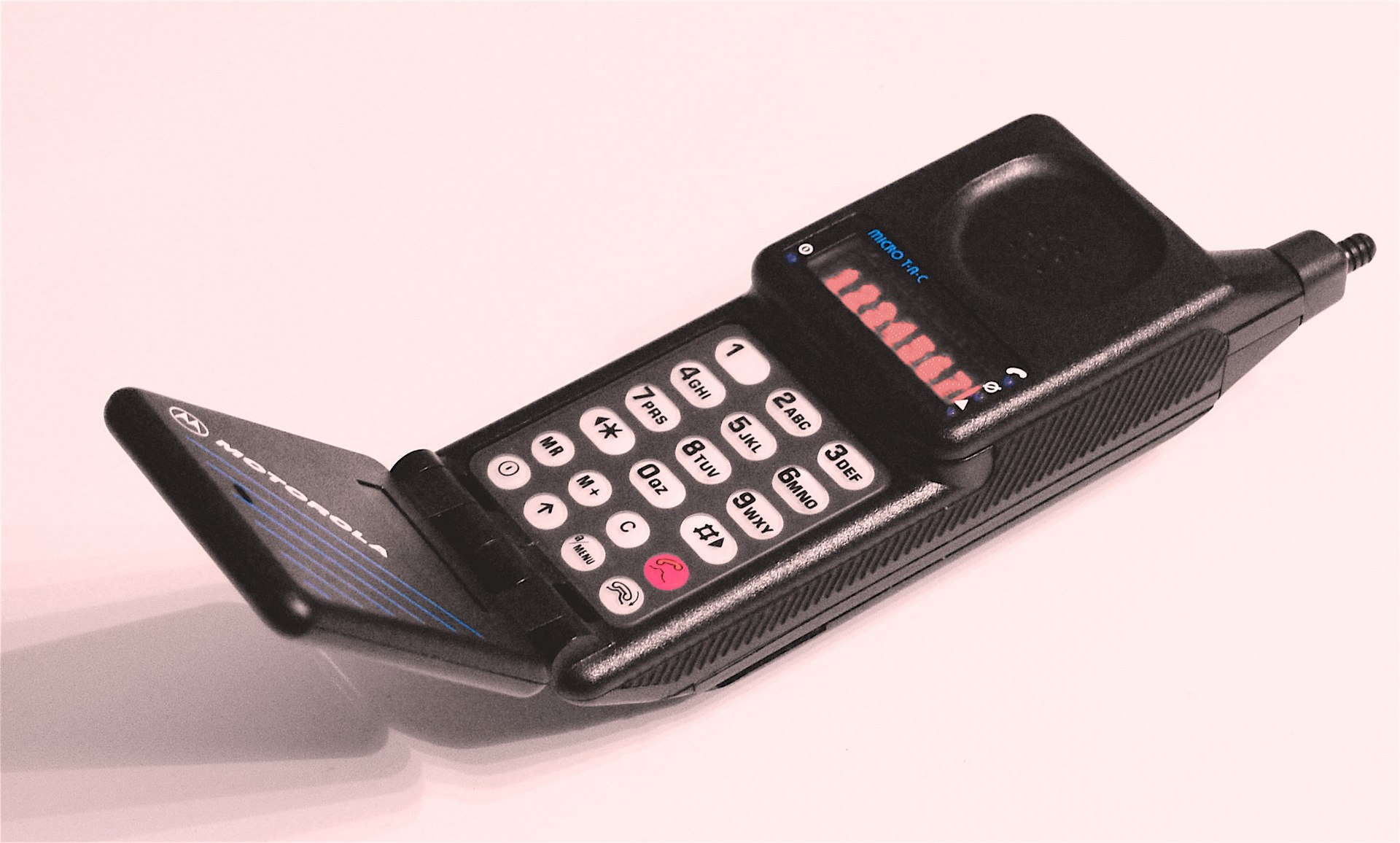-
1989 April 25
Hardware Description
The MicroTAC, released by Motorola on April 25, 1989, was the smallest and lightest phone available at the time. Upon its release, it made headlines across the world. The phone was released as the "MicroTAC Pocket Cellular Telephone." The first MicroTACs were known as the Motorola 9800X, a continuation of the numerical name Motorola gave their phones in the 1980s. The MicroTAC was designed to fit into a shirt pocket. These very rare phones featured a black plastic housing and a red 8-character dot-matrix LED display, which was able to show more information than the display of its predecessor, the Motorola DynaTAC 8000X. However, dot-matrix displays of the time were still quite limited by today's standards. The inside of the flip piece had the "Motorola" logo on a diagonal, above thin blue diagonal lines. The badge on the front flip had a raised metallic Motorola logo, and "Micro T.A.C" in small blue letters above the display. The "micro" sized phone measured as long as over 9 inches (23 cm) long when open and weighed in 12.3 ounces (350 g) with the slim battery. The phone incorporated a built-in alpha-numeric phone book as one of the many standard features. A numerically organized menu allowed the user to select options for phone operations. Some of the many options included security codes, two phone number operations, a charge rate and currency calculator, secretarial memory scratchpads, hands-free operation, keypad tones, memory protection, phone number and name storage, as well as cellular system operation options.
In addition to the standard 12-button keypad, the MicroTAC had buttons for Power, Function, Name/Menu, End, Send, Clear, Store, and Recall. The left side of the phone featured two buttons for adjusting the volume up and down. While in alpha mode, the volume buttons toggled between upper-case and lower-case text. The model sold for between U.S. $2,495 and U.S. $3,495, and was produced into the early 1990s before being replaced by newer versions.
Several variants of the 9800X existed, most notably models that featured a 10-character alpha-numeric liquid crystal display (LCD), which had a green backlight. These uncommon variants were made for the Norwegian Storno and Italian SIP networks in the early 1990s. The Storno variants operated on NMT-450 and the SIP models were of the ETACS/RTMS-450 Dual Band. They kept the "MicroTAC" Blue logo on the screen, the same black housing, but had different metallic badges in addition to the LCD.
The original models can be distinguished by their elongated antenna base, white-translucent keys and gray keypad background. Accessories for the phone included car, desktop and overnight travel chargers, installed hands-free car kits, leather cases, and a selection of batteries. The slimmest battery then available was the Slim and Slim Extended (Life), followed by the Standard, XT, and Talk-Pak XT batteries. The Talk-Pak XT and XT used Nickel Metal-Hydride while the others used Nickel Cadmium. A Lithium Ion battery was introduced in 1994.
The early 9800X-era MicroTACs were the only phones to have the microphone and ringer in the mouthpiece. These components were moved to the main phone body in all other models.
-
Model Number:
MicroTAC 9800X -
Manufacturer:
-
Hardware Type:
Mobile Phone -
Manufacture Year:
1989 April 25 -
More Info:
-
We recognize our sponsors starting at $1 per entry.
Learn more at https://www.ithistory.org/benefits

